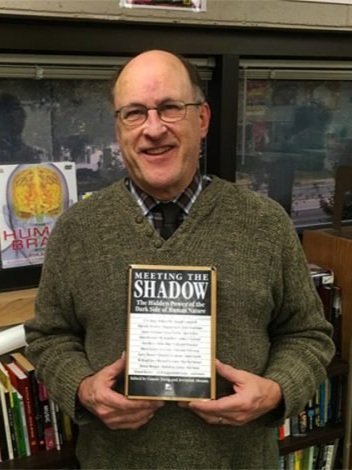The Paterno Statue
By Bill Bornschein | July 24, 2012
The pedophile scandal that has rocked Penn State University carries within it an element that Becker addressed so insightfully, the quest for immortality represented in the construction of all manner of memorials. In this particular case, ground zero for the anxiety surrounding this sad story is the iconic statue of Paterno, forefinger uplifted in the ‘Number 1’ gesture leading his players. The statue was removed this morning amid chants of “ We are Penn State!” from loyal fans. Prior to its removal the statue was protected from vandalism by a volunteer group of students. The juxtaposition of the statue’s removal with the recent death of Paterno himself has likely increased the feelings of loyalty to the football program. The angst of the entire situation was heightened by the squeaky clean image of Paterno’s program, one that stressed team over individual by not placing players’ names on the uniform. The perceived wholesomeness of Paterno and the program was reflected in a halo that adorned Paterno on a campus mural. The immortality overtone of the halo is obvious.
In chapter five of Escape From Evil, Becker speaks of the power of immortality ideology. He states, “All human ideologies, then, are affairs that deal directly with the sacredness of the individual or the group life, whether it seems that way or not, whether they admit it or not, whether the person knows it himself or not.” It follows that a threat to the individual is a threat to the group and a threat to the group is a threat to the individual. In describing primary cultures, Becker uses the power of immortality ideologies to explain why individuals submit themselves to painful passages into group identity. He asks,” Why would human beings… subject themselves to circumcisions and subincisions, perforated nasal septums, neck rings, holes in the flesh… if not for the ultimate stake: immortality, the triumph over the extinction of the body and its insignificance.” Even Ayn Rand would submit. In modern times the tribal scarification has been replaced by endless practices and workouts, all in the hopes of achieving athletic immortality in a Hall of Fame, the secular equivalent of Valhalla. Beyond the players and coaches, the entire university community participates in a rich mix of cultural rituals, pep rallies, bon fires, tailgating and the like that cements the group bonds.
This symbiotic relationship between the fate of the individual and the group is on full display in the case of Penn State. Pedophile Sandusky violated the primary rule by placing his individual lust over the good of the group and the leadership of the university looked the end of the way to preserve an institutional legacy, until it all came crashing down. How will this play out? The NCAA has leveled very severe penalties on the school and a new vigilance is apparent in member NCAA institutions. My prediction is that the football program will eventually thrive again, the need for communal immortality being that strong. One reason for my prediction is observing the case of basketball at the University of Kentucky in my home state. The University recently celebrated a national championship in men’s basketball. This program is the most heavily penalized in the history of college sports and it was only twenty years ago that Sports Illustrated featured a cover of a KY basketball player with head hanging and the headline, Kentucky’s Shame. Today, that is all ancient history. It is true, paying players, point shaving and falsifying transcripts pales in comparison to the Sandusky and Paterno transgressions. Further, in contrast to Penn State’s perceived tradition of integrity and wholesomeness, the University of Kentucky has a legacy of corruption that is broadly accepted by the fan base. Still, the overriding factor is the need to believe, the need to belong, the need to attach oneself to an immortality project, the need to transcend. Look for Penn State football to rise phoenix-like from the ashes.

